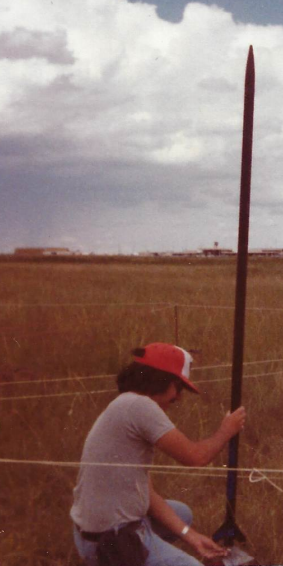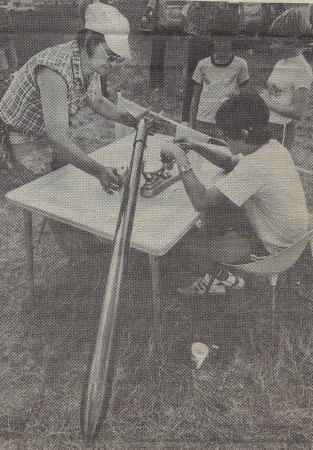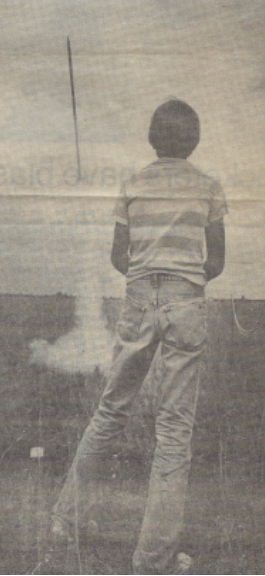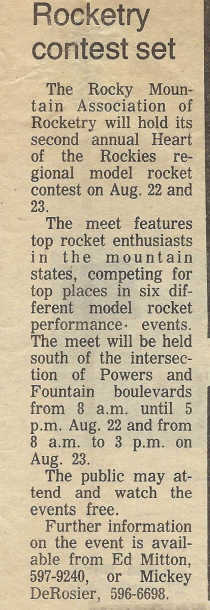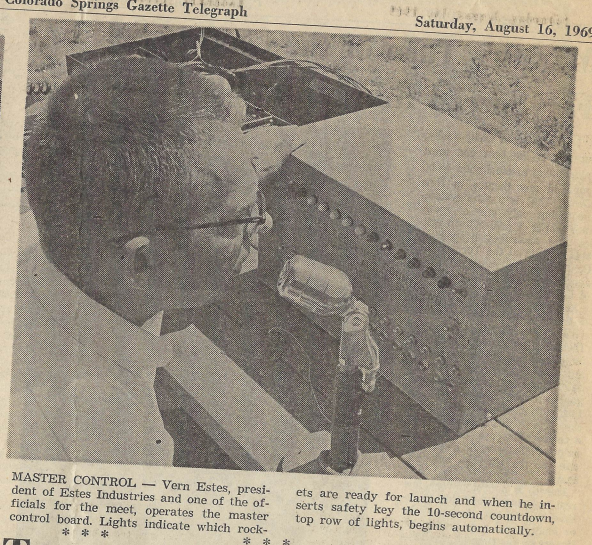By this time, ROMAR had grown to include enough members to renew its section charter, so HOTROC-2 could be flown as a Regional meet. The WARP section of Utah was represented by Randall Redd and Gary Price, and COSMIC of Denver was represented by Steve Sande and Ken Tanaka.
Once again, I served as Contest Director.
Weather was ideal for most of the meet except for the interruption of a nearby severe thunderstorm on the afternoon of the first day. We later learned that this storm had been accompanied by a tornado warning!
Events flown at the contest included:
The range set-up and organization was similar to the previous year's, i.e., an eight station Misfire Alley system.
Events flown at the contest included:
Class B Parachute Duration
Class C Eggloft Duration
Class D Super-Roc Duration
Class A Helicopter Duration
Class C Boost/Glide
Sport Scale
The range set-up and organization was similar to the previous year's, i.e., an eight station Misfire Alley system.
Here are some pics and other stuff that remain in my old archives from this fun event:
Randall Redd of Utah preps his B motor parachute duration entry. PD saw several flights topping the six minute range:
The Official HOTROC- 2 jacket patch:
Me and my Class C Eggloft bird:
Contestant Tadd Jensen prepares to launch his egglofter:
Steve Sande readies his Class D Super-Roc entry:
ROMAR member Glade Gordon at Super-Roc safety check:
Liftoff of Tadd Jensen' Super-Roc:
HOTROC-2 Press Release published in the local newspaper:
Front cover of the official HOTROC-2 programme handed out to range visitors:
Me posing with my USS Explorer cluster demo model. It flew successfully on a D12-5 with 2 B6-0 motors in the outboard fin pods:
Glade Gordon launches his Class C B/G. His efforts were to no avail, however, as Paul Heward took the event with a time far above all other entries:
Finally, a group shot of most of the HOTROC-2 contestants holding some of their rockets.
Far left, ROMAR's Glade Gordon poses with an upscale Laser-X and an FSI Black Brant II.
Third from left is Randall Redd with his winning Helicopter Duration bird. He posted a combined time of 2:22, which was quite excellent for the newly introduced event. Second from right is Gary Price from Utah, overall meet champion.
Far left, ROMAR's Glade Gordon poses with an upscale Laser-X and an FSI Black Brant II.
Third from left is Randall Redd with his winning Helicopter Duration bird. He posted a combined time of 2:22, which was quite excellent for the newly introduced event. Second from right is Gary Price from Utah, overall meet champion.
All in all, HOTROC-2 was a very enjoyable, relaxed model rocket contest featuring a lot of great flights, demo launches, and comradeship.
As the participants were leaving the field, plans were already being aired about HOTROC-3 the following year.




